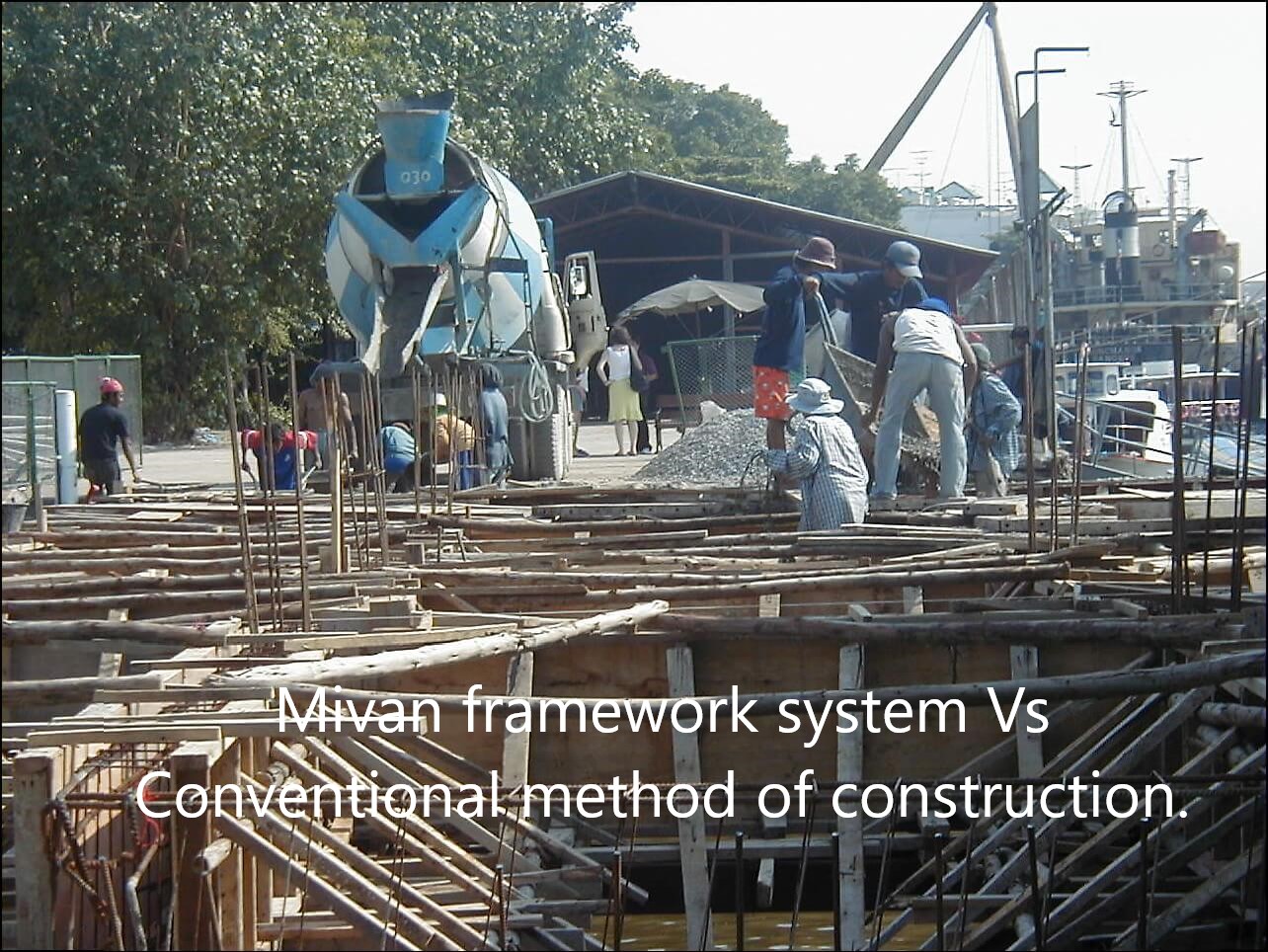Mivan framework system Vs Conventional method of construction.
Read latest blogs and articles from Housystan

The Information mentioned here was last updated on:
31/12/2025Exploring the Mivan Framework System Vs. Conventional Construction Methods
In the ever-evolving world of construction, efficiency, speed, and sustainability are the buzzwords driving innovation. With the demand for housing and infrastructure surging globally, the construction industry is shifting towards methods that promise quicker construction times, reduced costs, and enhanced structural quality. Two prominent methods stand out in current practice: the Mivan framework system and conventional construction methods. Let's delve into these two approaches, their characteristics, advantages, and limitations.
Understanding the Mivan Framework System
- Verified Tenants/Buyers
- Unlimited Property Listing
- Zero subscription/charges fee
The Mivan framework system, named after an engineering company from Malaysia that pioneered its development, is a form of aluminum formwork construction. It is fast gaining popularity in the construction sector due to its speed and efficiency. Here are some essential aspects:
Key Features of the Mivan System
- Aluminum Formwork: Unlike traditional formwork systems that use wood, Mivan utilizes durable aluminum, which can be used multiple times—up to 250 repetitions.
- Pre-cast Structures: Components are pre-cast, meaning they are manufactured in a controlled setting and then transported to the construction site.
- Uniformity and Precision: Mivan provides a highly uniform structure due to its pre-engineered design, leading to cleaner and more precise buildings.
Advantages
- Speed of Construction: The use of prefabrication drastically reduces construction times. Projects that traditionally took several months can be completed in weeks.
- Ease of Assembly: The pin-and-wedge system allows for easy assembly and disassembly, reducing labor costs.
- Quality and Durability: Enhanced structural integrity and a better finish are hallmarks of this approach, with minimal need for replastering.
- Environmental Impact: Mivan systems produce less waste, and the reusable nature of aluminum aligns with green building practices.
Limitations
- Initial Cost: The initial setup and procurement of aluminum forms can be expensive.
- Design Limitations: Best suited for repetitive designs—like residential apartments—due to the form’s specificity.
- Technical Expertise Required: Proper training is necessary to ensure the framework is used to its full potential.
Conventional Construction Methods
Traditional construction methods have been the mainstay of the industry for centuries, evolving with the development of new materials and technologies. Here’s a closer look at these techniques:
Key Features
- Variety of Materials: Involves a wide range of materials like timber, steel, and concrete, tailored to project requirements.
- Labor-Intensive Processes: Heavily relies on human labor for tasks ranging from bricklaying to carpentry.
- On-Site Construction: Most of the construction takes place on site, against the prefabrication method.
Advantages
- Flexibility in Design: Unlike the Mivan system, conventional methods offer greater flexibility in creating custom designs.
- Proven Reliability: Time-tested methods provide assurance of structural soundness.
- Material Options: Builders can choose from a plethora of materials, customizing according to functional and aesthetic requirements.
Limitations
- Longer Timeframes: Projects can take significantly longer due to on-site processes and labor dependency.
- Higher Labor Costs: The need for specialized skills can increase labor costs.
- Inconsistencies and Errors: Higher chances of inconsistencies in quality and precision due to manual processes.
Comparative Analysis
When choosing between Mivan and conventional methods, several factors come into play. Here’s a succinct comparison to aid decision-making:
- Cost Efficiency:
- Mivan may have higher initial costs but is more cost-effective in the long run due to reduced labor and faster project turnaround.
- Conventional methods offer flexibility in budgeting but may extend project timeframes and increase labor costs.
- Project Type Suitability:
- Mivan is ideal for projects with repetitive designs, such as multi-unit housing developments.
- Conventional construction shines in bespoke projects needing unique design and material customization.
- Environmental Considerations:
- Mivan's reusable materials and minimal waste support sustainability goals.
- Traditional methods may result in more waste but allow for sustainable choices, depending on material selection.
- Skill Requirements:
- Mivan requires specialized training for workers, aligning with high-tech construction practices.
- Conventional methods rely on a wider range of trade skills, suiting regions with a skilled labor pool.
Industry and Future Outlook
The construction sector is leaning towards modernization and adopting innovative methods to meet pressing demands. Mivan's role in revolutionizing urban landscapes, particularly in high-density cities, is undeniable. Governments and private sectors worldwide are recognizing its potential in mass housing projects. The tech-driven nature also integrates well with building information modeling (BIM) technologies, heralding a collaborative future for construction innovations.
On the other hand, conventional construction isn’t going away anytime soon. Its strengths in creating customized architectural marvels ensure its continued relevance. The future likely holds a hybrid approach, combining the rapid assembly of Mivan with the customization prowess of traditional methods.
The choice between Mivan framework systems and conventional construction ultimately boils down to project requirements, budget parameters, and long-term sustainability goals. Each method brings unique strengths that, when strategically employed, pave the way for efficient and resilient infrastructure development. In an industry poised on a delicate balance between innovation and tradition, understanding the nuances of both methods allows stakeholders to make informed decisions that boost both functionality and form.